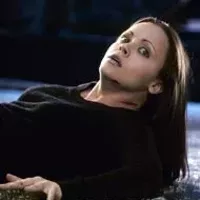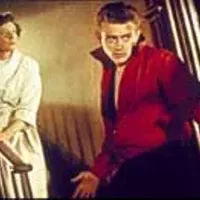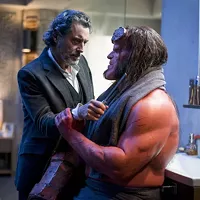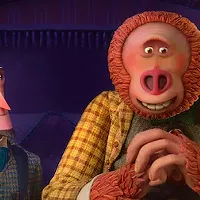







FILM NOIR CLASSIC COLLECTION VOL. 2 (1945-1952). Are the noir pickings already growing lean over at Warner Bros.? Last summer's release of Volume 1 contained five prime examples of the hard-boiled genre, yet this latest package includes two titles that maybe could pass as noir if you cover one eye and squint at the screen with the other. Still, noir or not, the majority of what's here is choice.
Made on the cheap, Dillinger (1945) isn't an example of film noir as much as it's cut from the same cloth as Warner crime melodramas like Little Caesar and The Public Enemy. Originally released by the "B" outfit Monogram Pictures, it pales next to those gangster classics, with newcomer Lawrence Tierney a weak substitute for Cagney, Bogart and Robinson (Tierney would become much more interesting in old age, delivering powerhouse performances in Tough Guys Don't Dance and Reservoir Dogs). Filmed in a no-nonsense fashion and running a brisk 70 minutes, this yarn about John Dillinger, Public Enemy Number One during the Depression, is efficiently made but offers little beyond what's expected.
Robert Wise may best be known as the director of such beloved works as The Sound of Music and West Side Story, but early in his career, he helmed Born to Kill (1947), a dazzling and decadent noir that's a far cry from the warmhearted pictures he made down the road. Tierney's in this one, too, playing a cold-blooded killer who marries a beautiful but naïve heiress (Audrey Long) in order to be close to both her money and her amoral sister (Claire Trevor). Packed with unscrupulous characters, crackling dialogue and bitter betrayals, this one's the real deal. Look for memorable turns by Walter Slezak as a Bible-quoting detective and Elisha Cook Jr. as Tierney's put-upon sidekick.
Crossfire (1947) is based on Richard Brooks' novel The Brick Foxhole, about the murder of a homosexual. But in order to make it past the Hollywood censors, the filmmakers changed the gay man into a Jew, in effect joining that year's Best Picture Oscar winner Gentleman's Agreement as a compelling study of anti-Semitism. Robert Young plays the detective handling the case, with Robert Mitchum offering fine support as the army sergeant who aids in the investigation. Unusual in its story structure and taking place completely at night, this major hit earned Oscar nominations for Best Picture, Edward Dmytryk's direction, John Paxton's screenplay, and the supporting performances by Robert Ryan (as the bigot who emerges as the prime suspect) and the incomparable Gloria Grahame (as a bitter floozy).
Until its weak-kneed conclusion, Clash By Night (1952) is an engrossing movie: literate, poignant and extremely well-acted. But a film noir? No way. Based on Clifford Odets' play and smoothly directed by Fritz Lang, its only noirish element is Barbara Stanwyck's role as a world-weary woman with faint femme fatale shadings. Otherwise, this is strictly kitchen-sink drama, with Stanwyck's character returning to her small hometown, marrying a lunkish but good-hearted fishing boat captain (Paul Douglas) and then carrying on an affair with his cynical best friend (Robert Ryan). Marilyn Monroe co-stars as an independent-minded factory worker who enjoys a feisty relationship with her macho fiancé (Keith Andes), and rarely has this perpetually underrated actress appeared sexier.
Finally, there's The Narrow Margin (1952), which is routinely tagged by virtually every critic as the quintessential "B" flick. It's certainly an example of how skilled direction can enhance a movie, as Richard Fleischer's imaginative staging milks maximum tension out of the film's claustrophobic setting. Charles McGraw plays the gruff detective who's assigned to escort a mob boss' widow (Marie Windsor) from Chicago to Los Angeles so she can testify before a grand jury. Their mode of transportation is a train, and the bulk of the trip is spent dodging the gunmen who've been assigned to bump her off. Fleischer would go on to direct big-budget studio films like 20,000 Leagues Under the Sea and Tora! Tora! Tora!, but this modest programmer, reportedly made for a couple hundred thousand dollars, remains one of his more notable achievements. This was competently remade in 1990, with Gene Hackman and Anne Archer in the leads.
Each DVD includes audio commentary by a filmmaker or film scholar; some also include the theatrical trailer.
Dillinger: 
 1/2
1/2
Born to Kill: 

 1/2
1/2
Crossfire: 

 1/2
1/2
Clash By Night: 


The Narrow Margin: 


Extras: 






